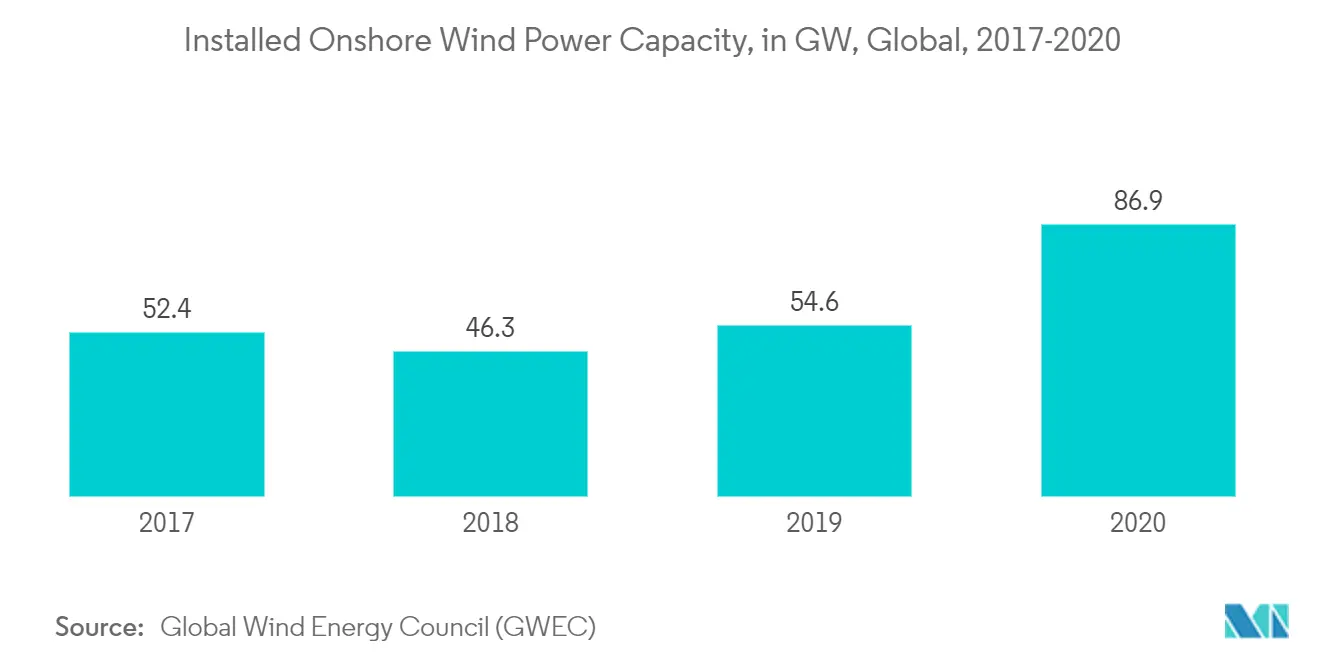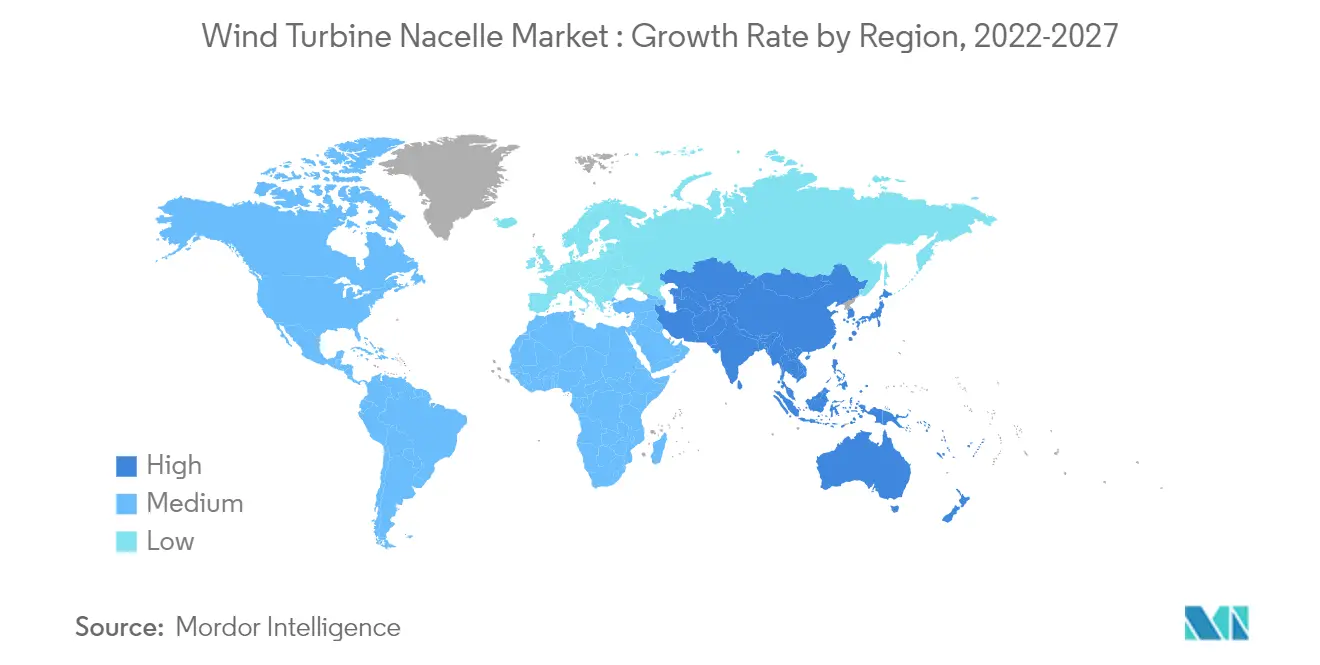Market Trends of Wind Turbine Nacelle Industry
This section covers the major market trends shaping the Wind Turbine Nacelle Market according to our research experts:
Onshore Segment is Expected to Dominate the Market
- Onshore wind turbines are relatively mature technology when compared to offshore turbines. As onshore wind turbines must tolerate lesser environmental stresses than offshore turbines, onshore wind turbines are relatively cheaper and designed to operate at lower tolerance levels. As of 2020, 86.9 GW of onshore wind projects were commissioned globally.
- However, due to challenges like abrasion damage from airborne dust and sand particles, onshore wind turbine nacelles must implement novel designs to reduce the impact of environmental forces.
- Onshore nacelle manufacturing facilities are mostly concentrated in the United States, Europe, and China, the biggest markets for onshore wind energy. However, nacelle manufacturing companies are rapidly expanding their presence in India, Brazil and ASEAN countries, where onshore wind deployment has been proliferating in recent years.
- In June 2021, Sulzon group announced to develop a 252 MW onshore wind power project in Gujarat. The company will install approximately 120 units of S120-140m wind turbine generators (WTGs) consisting of a hybrid lattice tubular tower, with a rated capacity of approximately 2 MW each and the project is expected to be commissioned by 2022.
- Further, projects like Baron Winds onshore wind farm in the United States is expected to boost the sector during the forecast period. The project is expected to be completed by 2022.
- Therefore, owing to the above points, onshore wind installations are expected to dominate the wind turbine nacelle market during the forecast period.

Asia-Pacific Region to Dominate the Market
- Asia-Pacific region is expected to dominate the wind turbine nacelle market during the forecast period. As the environmental regulations regarding carbon emissions are becoming more stringent, the Asia-Pacific region with the largest share of carbon emissions globally is expected to turn to a renewable source for energy generation purposes. This factor, in turn, is expected to boost the wind power installed capacity in the region in the coming years.
- Through intense R&D activities and increased supportive government policies the wind energy cost is definitely going to come down during the forecast period, in turn, boosting the number of turbines installed. This is also expected to increase the demand for wind turbine nacelles for the new installations in the region.
- Out of the total 6.1 GW installed in offshore worldwide, 50% of the installations were from China in 2020 and the total offshore capacity of China stood at 9.884 GW. All of this indicates that China is expected to be the largest market for wind turbine nacelle in the Asia-Pacific region.
- As of 2020, China holds the largest wind power generation capacity in the world. However, China's decision to end subsidies for onshore wind power in 2021 is likely to restrain the growth of the market in the future.
- India holds the fourth largest wind power installed capacity in the world. These projects are majorly spread in the Northern, Southern and Western parts of the country. With the policies and investment in research and development, the government has been successful in reducing the cost of wind power owing to which wind power has become an attractive market for the investors.
- India currently has a pipeline of 10.3 GW in central and state markets, which is expected to drive installations until 2023 in the market. The market post-2023 is likely to be driven by 10 GW of new capacity awards to wind, majorly in hybrid formats.
- Therefore, owing to the above points, Asia-Pacific is expected to be largest and fastest growing region during the forecast period.


